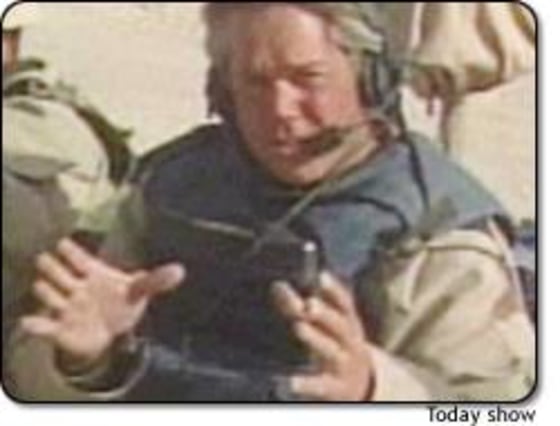Units of the U.S. 3rd Infantry Division are maneuvering south of Baghdad to seal off Iraqi escape routes and protect the division’s flanks before a major attack on what’s left of the Republican Guard — an assault that could come in a matter of hours, U.S. commanders said Tuesday.
U.S. commanders said they believe the Iraqi defenders are “combat ineffective,” with one of the two Republican Guards’ heavily armored divisions down to one-third of its fighting capacity and the other at only 40 percent capacity.
Initially, the Iraqi divisions had more tanks — T-72s and their top-of-the-line T-80s — than the U.S. attackers, but those numbers have now been “degraded” by heavy attacks by American warplanes and missiles. And if the quantitative ratio of the two forces is equal, the U.S. has a huge qualitative advantage in terms of being a much more heavily armored force, with a greater range, and better command and control — the ability to communicate and move about on the battlefield in a cohesive fashion.
Right now the American commanders believe the Iraqis are looking disjointed, with decisions being made based on an individual commander’s assessment of the immediate threat to his unit, and not with any regard for an overall strategy for the entire division.
Given that lack of coordination, the 1st Marine Division to the east and the 3rd Infantry on the west have seized a variety of roads and bridges, to confuse the Iraqis as to where the main American force will be coming from.
CHEMICAL THREAT WON’T STOP U.S.
U.S. commanders say they know there is a possibility that Iraqi artillery will lob shells carrying chemical weapons in their direction, but they seem convinced that that is not going to get in their way as they press forward and defeat what they see as a crown jewel in Saddam Hussein’s defense of Baghdad.
Routing the Republican Guards won’t end the war, however. U.S. commanders said they expect at least some of the Republican Guards and other Iraqi units, such as the regime’s internal security forces, to slip back into the capital.
Once the 3rd Infantry moves forward, U.S. commanders want to get the 101st Airborne Division to fill in behind them as quickly as possible, to prevent Iraqi irregular or guerilla attacks on their flanks or rear or on their supply lines.
A PAUSE BEFORE ATTACKING
For now, the unit we’re with, the 2nd Brigade of the 3rd Infantry, and those other units that will make the main assault, have halted, while other troops seal off possible Iraqi escape routes and roads the enemy could use to bring in reinforcements or to circle behind the 3rd Infantry.
Tuesday evening, many of the vehicles were parked some distance on either side of a two-lane road, avoiding the roadway itself in case the Iraqis had already zeroed in on it with their artillery.
Many of these troops are displaying a bit of youthful exuberance and perhaps naivete as to what they may encounter. So far, they’ve been very fortunate — while they’ve been attacked by rocket-propelled grenades, AK-47 automatic weapons, they’ve had mortar shells land a few hundred yards from their location, and were even attacked by machine guns mounted on motorcycles, none of the 900 soldiers of the 2nd Brigade have died.
But now their main battle lies only hours away.
(David Bloom is an NBC News correspondent traveling with the 3rd Infantry Division)
